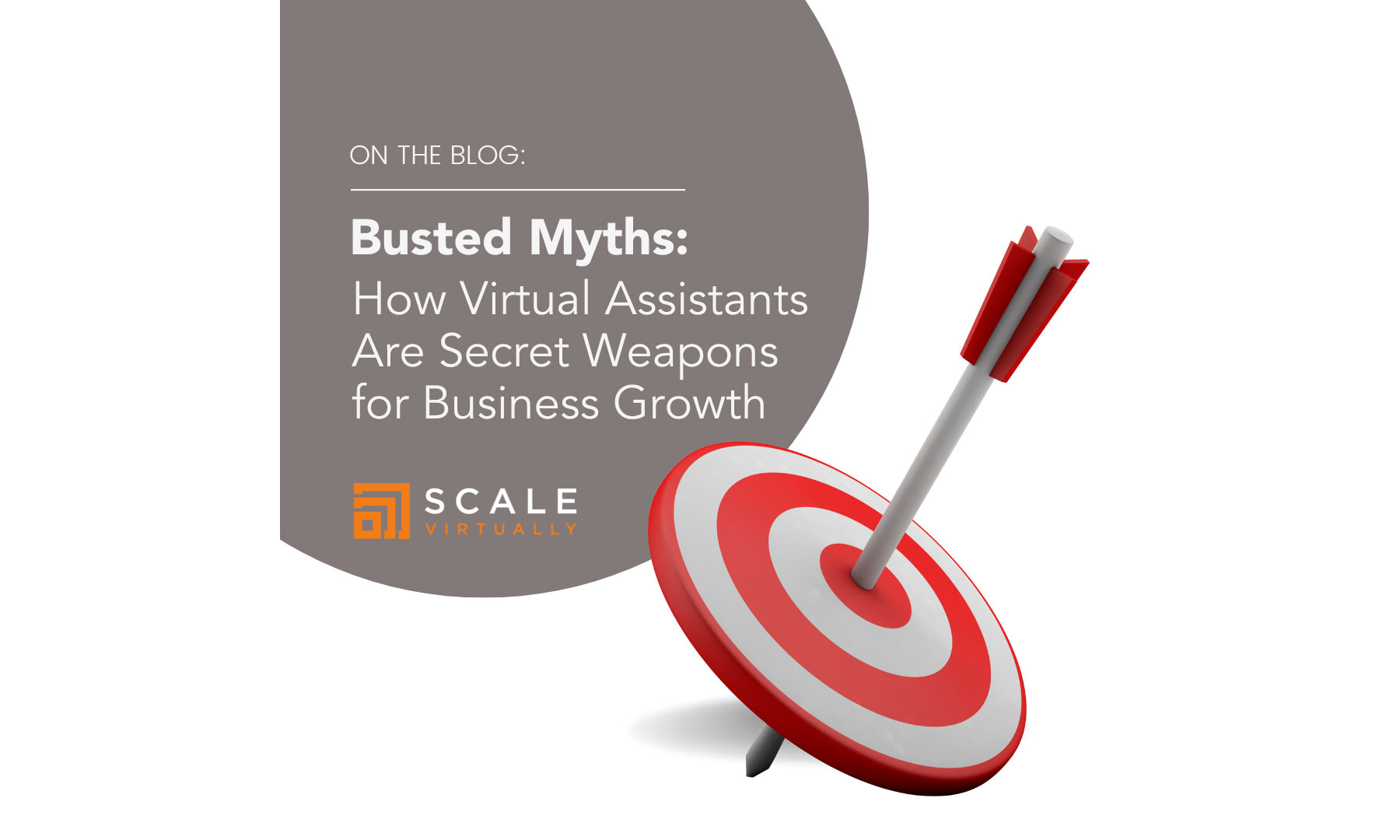In today’s rapidly evolving business landscape, virtual assistants (VAs) have become invaluable assets to companies of all sizes. Despite their growing popularity, several myths persist about working with VAs. These misconceptions often deter businesses from leveraging the full potential of virtual assistants. In this blog, we will debunk common myths and highlight how VAs can drive business growth.
Myth 1: Virtual Assistants Are Only for Small Tasks
One of the most pervasive myths is that virtual assistants are only suitable for handling minor, low-value tasks such as scheduling appointments or managing emails. While VAs can certainly manage these responsibilities with efficiency, their capabilities extend far beyond basic administrative duties. Experienced virtual assistants can handle complex projects, conduct market research, manage social media strategies, and even assist in project management. By delegating a wide range of tasks to a VA, businesses can free up time for their core teams to focus on strategic initiatives and innovation.
Myth 2: Virtual Assistants Lack Commitment and Reliability
Another common misconception is that virtual assistants are not as committed or reliable as in-house employees. This myth stems from the mistaken belief that remote workers are less accountable due to the physical distance. In reality, professional VAs operate with a high level of dedication and professionalism. They understand that their reputation and livelihood depend on delivering consistent, high-quality work. Moreover, many virtual assistants are accustomed to working with various clients and adhering to strict deadlines, making them adept at managing their time and responsibilities effectively.
Myth 3: Communication with Virtual Assistants Is Difficult
Some business owners worry that collaborating with virtual assistants will be challenging due to potential communication barriers. However, advancements in technology have made it easier than ever to maintain seamless communication with remote teams. Tools like Slack, Zoom, Microsoft Teams, and Asana facilitate real-time collaboration and project management. Additionally, many VAs are proficient in multiple languages and possess excellent communication skills, ensuring that interactions are smooth and efficient.
Myth 4: Virtual Assistants Are Expensive
The perception that hiring a virtual assistant is a costly investment is another myth that needs debunking. In fact, VAs can be a cost-effective solution for businesses. Hiring a full-time in-house employee involves significant expenses, including salaries, benefits, office space, and equipment. Virtual assistants, on the other hand, typically work on a contractual basis, allowing businesses to scale their support up or down based on current needs. This flexibility can lead to substantial cost savings, particularly for small and medium-sized enterprises (SMEs).
Myth 5: Virtual Assistants Can’t Integrate with Existing Teams
Many business owners fear that virtual assistants won’t be able to integrate seamlessly with their existing teams. However, VAs are skilled at adapting to different work environments and cultures. They often bring diverse experiences from working with various industries, which can be an asset to any team. By leveraging collaboration tools and establishing clear communication channels, businesses can ensure that VAs become an integral part of their workforce.
How Virtual Assistants Drive Business Growth
Enhanced Productivity and Focus
By delegating routine and time-consuming tasks to virtual assistants, businesses can enhance productivity and allow their core teams to focus on high-value activities. This increased focus can lead to more innovative solutions and better decision-making, driving business growth.
Scalability and Flexibility
Virtual assistants offer unparalleled scalability and flexibility. Businesses can hire VAs on a project basis, part-time, or full-time, depending on their needs. This adaptability allows companies to respond quickly to changing market conditions without the long-term commitment of hiring permanent staff.
Access to a Global Talent Pool
Working with virtual assistants provides businesses with access to a global talent pool. This diversity brings fresh perspectives and expertise that might not be available locally. It also allows companies to operate around the clock, as VAs in different time zones can ensure continuous productivity.
Cost Savings
As mentioned earlier, virtual assistants can significantly reduce operational costs. The savings on salaries, benefits, and office expenses can be reinvested in growth initiatives, such as marketing, product development, or expanding into new markets.
Improved Work-Life Balance for Employees
By offloading routine tasks to virtual assistants, businesses can reduce the workload on their in-house teams. This can lead to improved work-life balance, higher job satisfaction, and lower employee turnover rates. A happier, more engaged workforce is often more productive and creative, contributing to overall business growth.
Conclusion
The myths surrounding virtual assistants can prevent businesses from tapping into a valuable resource. By understanding the truth about VAs and their capabilities, companies can unlock new opportunities for growth and efficiency. Virtual assistants are not just for small tasks—they are versatile, committed, and integral members of modern business teams. Embracing the potential of VAs can lead to enhanced productivity, cost savings, and a more agile, competitive business. Contact our team to learn more and schedule a FREE session.
